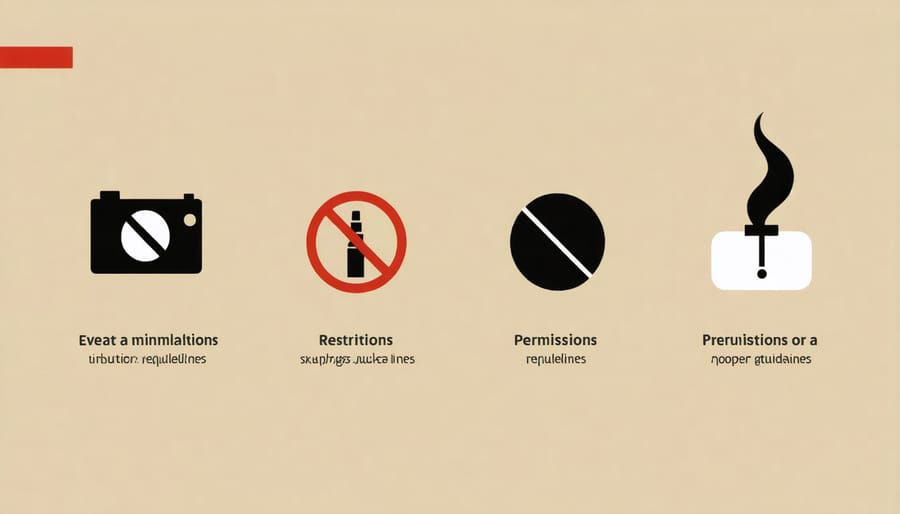Review Calgary’s updated vaping regulations immediately to understand how they affect you and your business. Stay informed about new age restrictions, advertising limitations, and sale restrictions in public places. Evaluate any impact on your purchasing options and explore alternatives, like those offered by montreal’s best vapes and snacks, that comply with these changes. Join local discussions to engage with community feedback and learn more about the health motivations behind these regulations.

The Background: Understanding Calgary’s Vaping Landscape
To truly understand the recent updates to Calgary’s vaping regulations, it’s important to take a step back and look at how the city’s approach to vaping has evolved. Initially, vaping entered Calgary with little oversight, following global trends that saw these devices rapidly gaining popularity as an alternative to traditional smoking. Residents and businesses welcomed this new option, with many embracing it as a way to reduce tobacco use. However, as the city began to see an upsurge in the availability of vaping products, including more experimental flavors and devices, questions about safety, and the need for appropriate regulation started to arise.
Over the years, Calgary has had to juggle the popular rise of vaping with concerns about public health, especially among younger demographics. Though initially perceived as a less harmful choice compared to cigarettes, studies began to reveal potential health risks associated with vaping. This prompted officials to reconsider how these products were regulated, leading to the gradual tightening of rules over sales and advertising, with a strong emphasis on preventing underage use.
Community feedback has played a significant role in shaping the local laws, with residents expressing both support for stricter regulations and concerns over personal freedoms. The balance has been a delicate one, trying to uphold public health standards without stifling business. Recently, the city has seen a notable increase in disposable vape options, adding yet another layer to the regulatory landscape, as new vape trends prompt further scrutiny and updates to existing laws.
By understanding this history, we gain a clearer perspective on why these updates are significant. They reflect an ongoing effort by Calgary to adapt to an ever-changing market while prioritizing the well-being of its community. This historical context highlights the city’s commitment to safeguarding public health while navigating the complexities of emerging technologies and consumer preferences.
What Changed: Key Updates in Calgary’s Vaping Regulations
Restrictions and Permissions
Calgary’s recent vaping regulations introduce several important restrictions aimed at safeguarding public health and creating a safer environment for residents. The new rules primarily prohibit the use of vaping devices in any public indoor spaces, mirroring the existing smoking bans. This includes areas like shopping malls, restaurants, and bars, bringing vaping under a similar level of scrutiny as traditional tobacco products. Additionally, sales of vaping products are now restricted to specialty shops with clear signage indicating that entry is limited to those 18 and over. These shops are also required to keep vaping products out of direct view from outside to discourage any unsolicited interest from minors.
Exceptions to these restrictions exist, tailored to balance public health concerns with individual needs. For example, designated vaping rooms in certain long-term care facilities are permitted, provided they meet specific ventilation and safety requirements. Similarly, vaping is still allowed in private residences and outdoor spaces not specifically mentioned in the regulations. Businesses impacted by these changes have a short grace period to comply, ensuring they have time to adjust without immediate penalties. This approach reflects a careful consideration of both health and economic factors, aiming to create a balanced framework that protects citizens while respecting individual freedoms.

Impact on Local Businesses
The recent vaping regulations in Calgary have stirred significant concern among local businesses, particularly vape shops and related industries. For many of these small businesses, the regulations create a challenging environment as they strive to adapt to new rules while retaining their customer base. Vape shop owners are worried about potential decreases in sales, particularly if the restrictions lead to reduced product availability or appeal. The shift in regulations may also result in increased compliance costs, which for some could mean the difference between staying in business and shutting down.
Furthermore, businesses that sell vaping products might need to rethink their marketing strategies to align with the new rules. This could involve altering store layouts, updating promotional material, or even changing the type of products offered. The ripple effect of these changes could also influence suppliers and distributors, further complicating the local business ecosystem. Some businesses may need to revisit strategies amid these tighter restrictions, similar to tactics used by e-cigarette companies targeting youth.
Despite these hurdles, some entrepreneurs view this as an opportunity to innovate and differentiate their offerings, focusing on quality and compliant products. As Calgary’s vaping community adjusts, these businesses aim to balance regulatory compliance with evolving consumer expectations, hoping to find a pathway that supports both public health objectives and economic stability.
Community Reactions: What Calgarians Are Saying
Local residents have been vocal about the recent updates to Calgary’s vaping regulations, with a mix of reactions reflecting their diverse perspectives. Jane Thompson, a concerned parent and Calgary resident, expressed relief, noting that the stricter rules on vaping could help deter youth from picking up the habit. “With so many marketing tactics aimed at young people, it’s time for our city to take a stand,” she said. Her sentiments were echoed by other parents who have witnessed the rise of vaping among teenagers and worry about the health implications.
On the business front, reactions are more varied. Michael Liu, the owner of a local vape shop, voiced his concerns about the potential impact on his business. “While I understand the health concerns, it feels like small businesses are bearing the brunt of these changes,” he explained. Liu worries that the new regulations might drive customers to online retailers or black market options, ultimately affecting his livelihood.
Meanwhile, Sarah Collins, a public health advocate based in Calgary, sees the regulation updates as a positive step forward. “We need to prioritize public health, and these changes are in line with what experts have been recommending,” she said during a recent interview. Collins believes that raising awareness about the risks associated with vaping is crucial, and stricter regulations are a significant part of that effort.
Community leaders are also weighing in, with Councillor Eric Jensen stating that the regulations are designed to find a balance between public health and personal freedom. “We want to support local businesses while ensuring our community is safe and healthy,” Jensen added. This approach seeks to address the concerns of businesses while keeping the broader health goals in mind.
Overall, the new vaping regulations in Calgary have sparked a lively discussion among locals, underscoring the complex challenge of balancing business interests with public health priorities. As the community adapts to these changes, the conversation continues, revealing the varied priorities and concerns of Calgarians.

Health Perspectives: Understanding the Health Implications
As vaping continues to spark debates across Canada, Calgary’s recent update in vaping regulations sheds light on pressing health concerns that are driving these changes. Health experts have voiced significant worries about the potential risks associated with vaping, particularly as it has grown popular among younger demographics. Although some argue that vaping might be a less harmful alternative to traditional smoking, studies suggest that it still presents serious health implications.
One of the primary concerns is the impact of vaping on lung health. Vaping aerosols contain harmful chemicals which can lead to respiratory issues, and ongoing exposure might increase the risk of chronic lung diseases. Furthermore, the presence of nicotine in most vaping products holds addiction risks, not only entangling users in dependency but also hindering their efforts to quit smoking altogether.
The health ramifications extend beyond individual users. Exposure to vaping aerosols, much like secondhand smoking, poses health threats to non-users, including potential respiratory problems and other ailments from the chemicals released into the air. These health implications are core motivators for the stricter regulations imposed in Calgary, aiming to curb vaping’s prevalence, especially among young adults.
By tightening restrictions, authorities hope to address these public health challenges, promoting safer communities and encouraging healthier lifestyle choices. This approach reflects a broader trend towards preventive public health strategies, ultimately aiming to reduce the long-term health burden associated with vaping. Hopefully, these measures will contribute to a more informed public, highlighting the importance of protecting community health and prioritizing wellness initiatives that benefit all residents of southern Alberta.
Conclusion
Calgary’s latest vaping regulations have sparked significant discussion across the community, impacting both residents and businesses. The updated laws are geared towards balancing the concerns of public health with the interests of local entrepreneurs. With a strong focus on cancer prevention and youth protection, these regulations reflect a growing trend towards stricter control of vaping products in cities. As the city navigates these changes, residents remain engaged in the conversation, keenly observing how these rules will evolve. Looking ahead, more discussions and feedback sessions are expected as Calgary continues prioritizing community well-being while adapting to new health insights.










